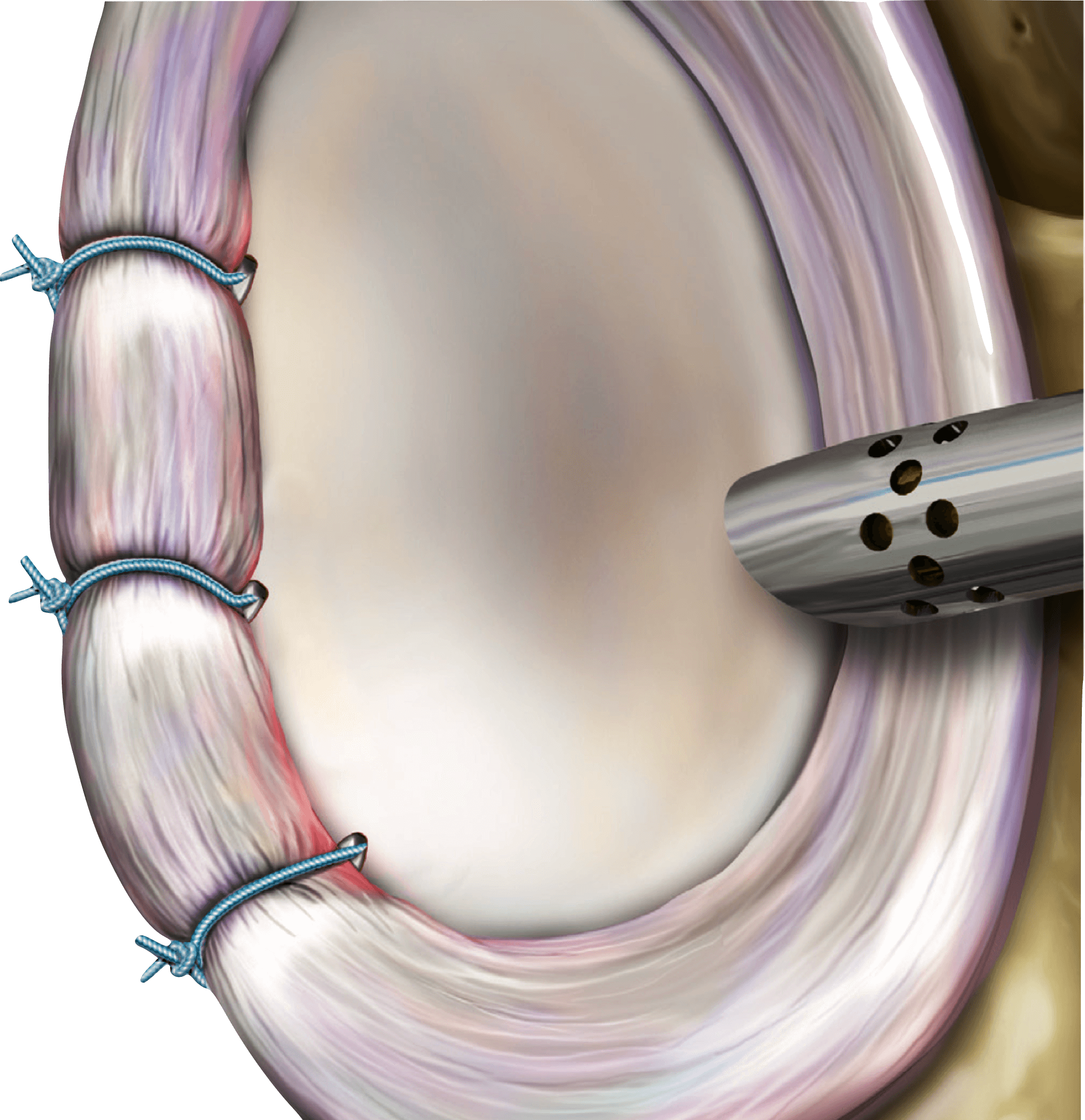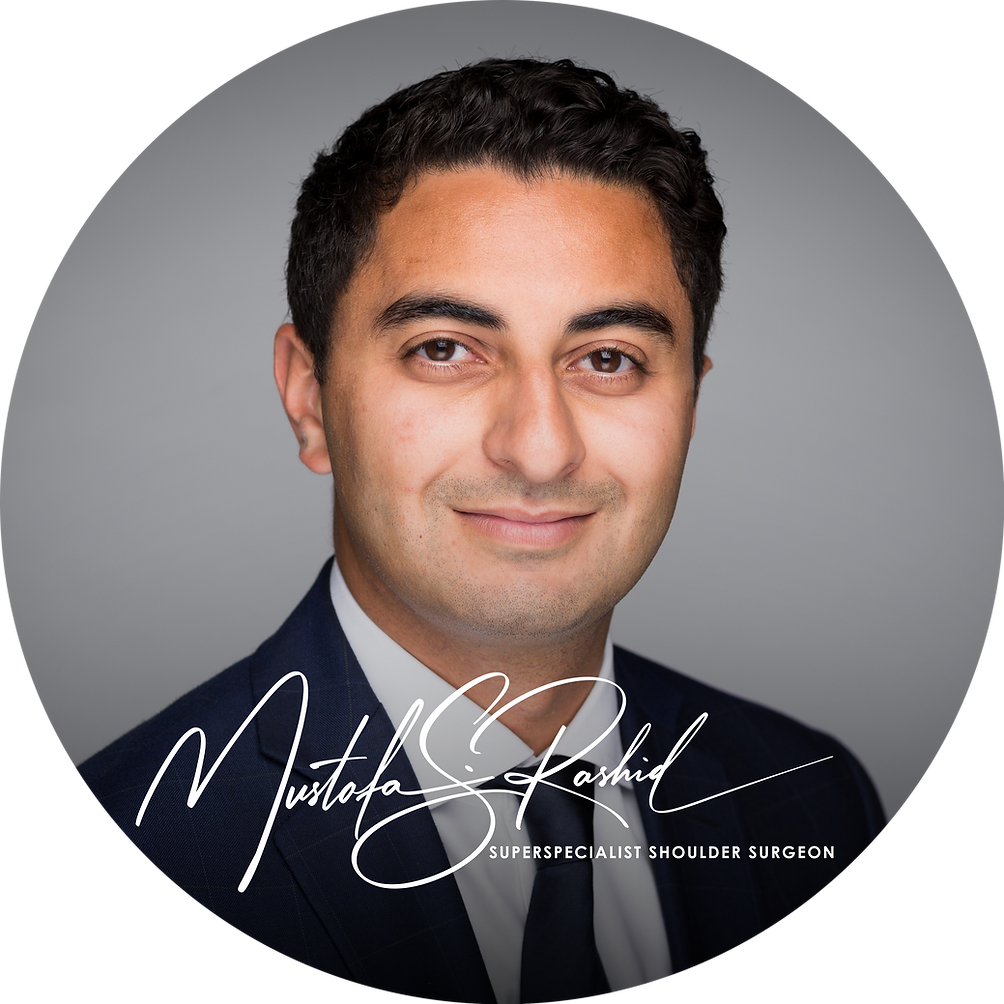Shoulder Stabilisation Surgery

Overview
Dr. Rashid performs shoulder stabilisation surgery using arthroscopic (keyhole) surgery techniques. It is a safe and effective procedure aimed at repairing the torn labrum (ring of cartilage) to the socket of the shoulder. This procedure can take between 1 and 2 hours, and is often successful at reducing the lifetime risk of further shoulder dislocations, allowing restoration of strength and confidence with activities. It is performed under general anaesthesia, often with a nerve block (regional anaesthesia) as an adjunct to provide pain relief in the post-surgery period.
Indications for surgery
For most people, they choose to have surgery to stabilise their shoulder to either reduce the risk of further dislocations in the future, or to provide stability to a shoulder that feels unstable. For some patients, they feel that they need surgery to regain the ability and confidence to return to their chosen sports.
Pre-surgery tests and assessment
Before any shoulder stabilisation surgery, a variety of assessments and tests, such as X-rays, and a MRI (with contrast injection) scan or a CT scan are performed to assess the extent of damage, and whether there is any bone loss from the ball and/or socket of the shoulder. Dr. Rashid will address all areas of damage at the same time, to maximise your potential of full recovery.
Procedure Details
Under general anaesthesia, you will be placed on your side and the affected arm is placed in a special arm holder. After sterilising the skin with cleaning solution, a keyhole camera is inserted into the shoulder joint. The damage is then inspected and the labrum is prepared for repair. A 1.9mm drill is used to make a pilot hole for anchors to be inserted into the socket. These anchors have ultrastrong sutures that are used to pass around the labrum and to tie it down to the bone. At the same time, the defect on the ball of the shoulder is prepared to be filled in, with your own tissue to address this defect. This is done with two more anchors.
The portal sites are closed with stitches that are absorbable and buried under the skin. Dressings and a sling are then applied.
Risks and Complications
The risks of shoulder stabilisation surgery are not common. These include stiffness (most common risk), recurrent dislocations (5% risk), infection, and nerve injury (very rare). Occasionally, patients may develop a type of arthritis related to the dislocation events, many years later.
Recovery and rehabilitation
Compliance to quality physiotherapy is essential for a good outcome. Dr. Rashid will work with your physiotherapist to outline a protocol for rehab. This will be based in phases and designed to allow you full return to all activities. Rehab for this surgery involves working on range of motion, positioning of the shoulder blades, and addressing any deficiencies in muscle imbalances, including in your core and lower limbs.
Expected Outcomes
After a period of rehabilitation, guided by a physiotherapist, working closely with Dr. Rashid, most patients are able to return to full sports participation and confidence. This often takes between 3-6 months after surgery. The risk of further dislocation is present, especially if a significant new trauma occurs. That risk is ever zero after surgery, but greatly reduced with successful surgery. When measured, patients will often lose 5 degrees of rotation compared to the other side, but this is often not noticeable and does not limit activities for the vast majority of patients. Overall, most patients are satisfied with their surgical outcome.
About the Author

Mustafa Rashid
Dr. Mustafa Rashid is an award-winning, well published superspecialised surgeon from the UK, specialising in shoulders
